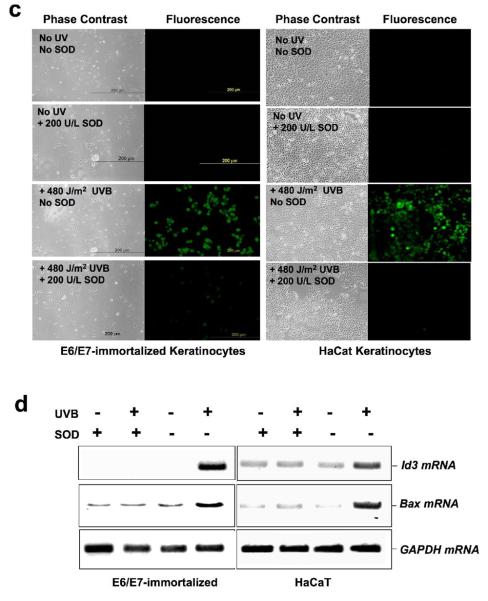Figure 2.
X/XO and UVB upregulate Id3 in immortalized keratinocytes via superoxide release. Immortalized E6/E7 keratinocytes (a-d) or HaCaT (c, d) were exposed to either vehicle (ethanol; control), 100 μM X/XO (a), or UVB (b-d) for the indicated times, in the presence or absence of the pharmacological inhibitor superoxide dismutase (SOD; 0.2 U/ml), or NAC, or α- tocopherol (b) followed by RNA isolation (a, b, d) and Id3 mRNA quantification by Q-PCR (a, b) or Id3 and bax mRNA by RT-PCR and electrophoresis (d). Results are mean ± S.D. of three replicates of a representative experiment; essentially the same results were obtained in three independent experiments. One or two asterisks denote significance levels corresponding to p<.05 or p<.01 when compared to +SOD (a) or to no treatment (b). (c) Pretreatment of cells with CM-H2DCFDA dye prior to UVB exposure reveals superoxide that is inhibited by SOD. Representative phase contrast and fluorescent images are shown. (d) ROS mediate UVB induction of Id3 and bax mRNAs. Immortalized keratinocytes were exposed to 480 J/m2 UVB with or without SOD, and RNA isolated after 4 hours and subjected to RTPCR using Id3, bax, or GAPDH primers, followed by electrophoresis.


